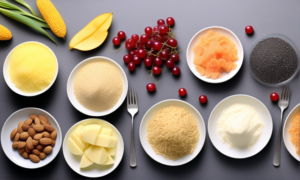 About Gluten-Free Diet: What You Need to Know
In recent years, adopting a "gluten-free diet" has become increasingly popular. Various "gluten-free" products are now available both online and in supermarkets. Individuals with thyroid disorders, those aiming to lose weight, individuals with digestive discomfort, those prone to inflammatory reactions, people with eczema, and those allergic or intolerant to gluten are advised to avoid gluten-containing products. Some have experienced weight loss, reduced thyroid antibody levels, improved skin conditions, and increased vitality after eliminating gluten from their diets. However, others find it challenging to adhere to this diet due to food restrictions, higher costs, and increased stress. So, is a gluten-free diet necessary, and if so, how should it be approached?
Key Point 1
What is gluten? What foods contain high levels of gluten?
Gluten refers to wheat gluten protein, a crucial component of wheat-based foods. When wheat gluten protein interacts with water, it forms a large, continuous gluten network, providing the unique elastic structure responsible for the diverse and appealing texture of wheat-based products. Whether it's the airy structure of bread, the fine strands of noodles, or the stretchiness of dumpling skins, they owe their characteristics to the adhesive elasticity brought about by gluten. In general, the stronger the gluten strength in wheat-based products, the less suitable they are for individuals sensitive to gluten.
Many people mistakenly believe that avoiding gluten means consuming less whole grains and avoiding bran components, but this is a misconception. "Gluten" is unrelated to bran, coarse grains, and other concepts. Compared to whole wheat flour, refined white flour has a higher gluten content.
Wheat is the primary source of wheat gluten protein (gluten) in food. Barley, rye, and triticale can also form gluten structures.
Other grains like buckwheat, quinoa, and amaranth cannot form a gluten structure, making them gluten-free.
Key Point 2
Why can gluten cause trouble?
A small number of individuals experience allergic reactions to wheat gluten protein, with the most severe being "celiac disease," or gluten-sensitive enteropathy. Consuming foods containing wheat gluten protein can lead to damage to the small intestine mucosa and result in severe malnutrition for those with this condition.
For individuals with weak digestive abilities, breaking down the extensive network of wheat gluten protein is challenging. Undegraded fragments of wheat gluten protein that enter the bloodstream after damage to the intestinal mucosa may trigger an immune response, causing an increase in inflammatory reactions and leading to a series of adverse reactions. This situation is often classified as a "food intolerance" reaction.
Additionally, some people may have antibodies to wheat gluten protein in their blood, known as chronic wheat allergy or wheat sensitivity. This can manifest as various low-level inflammatory reactions causing discomfort such as unexplained weight gain, brain fog, inflammation of the skin and mucous membranes, eczema, headaches, irritability, bloating, fatigue, and digestive problems. Since these adverse reactions may not occur immediately after eating and lack specificity, they are often overlooked.
Moreover, food intolerance reactions are often accompanied by post-meal fatigue, feelings of stress, and a noticeable increase in heart rate.
Key Point 3
How to know if you have gluten intolerance
If you suspect you have gluten intolerance, you can temporarily eliminate all wheat-based foods for a month and observe whether various discomforts and biochemical indicators show significant improvement. If there is no improvement, it indicates that your condition is not caused by consuming foods containing wheat gluten protein. If it is, continue to avoid them.
After six months, try reintroducing these foods in small amounts. If, after several attempts, there are no adverse reactions, you can continue to consume them. If adverse reactions persist, continue to avoid these foods.
Additionally, you can consult with the allergy and nutrition departments of a tertiary hospital, undergo relevant tests, and seek medical advice to confirm your condition and receive recommendations on whether to stop consuming wheat gluten-containing foods.
Key Point 4
Which gluten-free ingredients can replace wheat-based foods
Main food ingredients that do not contain wheat gluten protein include:
Various types of rice (including white, red, purple, and black varieties).
Millet, sorghum (sticky varieties are called glutinous millet), including both sticky and non-sticky varieties.
Corn in various colors.
Quinoa, buckwheat.
Potatoes, sweet potatoes, yams, taro, and other tubers.
Red beans, green beans, various colorful kidney beans, dry peas, chickpeas, and lentils.
These ingredients can replace wheat-based foods as part of the main food ingredients. When craving noodles, you can use rice noodles or rice vermicelli as substitutes. For snacks, you can use gluten-free flour to make baked goods or replace them with rice cakes, taro cakes, bean rolls, or mashed potatoes.
Key Point 5
Which gluten-containing foods can be eaten in small quantities
For those without severe gluten allergies, especially those opting for a gluten-free diet to improve their health, the following foods can be considered:
Soy sauce, yellow bean sauce, sweet bean sauce, etc. Although their raw materials contain wheat flour, the finished products have lower protein content, and the large molecular network structure has been lost due to microbial degradation.
Oatmeal porridge. Oats themselves have lower wheat gluten protein content than wheat and barley. When pressed and cooked into porridge, the natural structure of the grains is also destroyed, making it challenging to form a continuous gluten protein network. Therefore, oatmeal porridge can still be consumed under the premise of confirming no adverse reactions.
Gluten. In the process of making gluten, most of the protein is removed, so the gluten content is low. However, extra gluten chunks given during processing should not be consumed. After washing away the protein, not only does the protein content decrease significantly, but also the loss of vitamins and minerals, making the nutritional value of such foods low.
Dim sum such as shrimp dumplings. They have a transparent outer skin made from starch, not flour, specifically wheat starch without protein. The vitamin and mineral content is also low.
Cakes, cookies, and pastries. These are made with low-gluten flour, with lower gluten protein content than regular wheat-based products. Additionally, a large amount of oil added impedes the formation of the gluten network. The main issue is that they have low nutritional value and high calories, so they are not recommended for frequent consumption.
Except for oatmeal, the nutritional value of these foods is generally low. They should not be consumed regularly just because they have low gluten content; they can be used occasionally to change flavors.
However, individuals with severe allergic reactions, especially those with celiac disease, should still try to avoid these foods. After trying in small quantities a few times, wait for at least three days to confirm no adverse reactions before consumption.
Perhaps it is precisely because one cannot eat wheat-based foods that people discover how overly dependent they are on various delicious foods made from wheat. Without them, the variety of daily food ingredients can be more diverse. Mixing millet with fish, meat, eggs, and various vegetables can also be delicious.
About Gluten-Free Diet: What You Need to Know
In recent years, adopting a "gluten-free diet" has become increasingly popular. Various "gluten-free" products are now available both online and in supermarkets. Individuals with thyroid disorders, those aiming to lose weight, individuals with digestive discomfort, those prone to inflammatory reactions, people with eczema, and those allergic or intolerant to gluten are advised to avoid gluten-containing products. Some have experienced weight loss, reduced thyroid antibody levels, improved skin conditions, and increased vitality after eliminating gluten from their diets. However, others find it challenging to adhere to this diet due to food restrictions, higher costs, and increased stress. So, is a gluten-free diet necessary, and if so, how should it be approached?
Key Point 1
What is gluten? What foods contain high levels of gluten?
Gluten refers to wheat gluten protein, a crucial component of wheat-based foods. When wheat gluten protein interacts with water, it forms a large, continuous gluten network, providing the unique elastic structure responsible for the diverse and appealing texture of wheat-based products. Whether it's the airy structure of bread, the fine strands of noodles, or the stretchiness of dumpling skins, they owe their characteristics to the adhesive elasticity brought about by gluten. In general, the stronger the gluten strength in wheat-based products, the less suitable they are for individuals sensitive to gluten.
Many people mistakenly believe that avoiding gluten means consuming less whole grains and avoiding bran components, but this is a misconception. "Gluten" is unrelated to bran, coarse grains, and other concepts. Compared to whole wheat flour, refined white flour has a higher gluten content.
Wheat is the primary source of wheat gluten protein (gluten) in food. Barley, rye, and triticale can also form gluten structures.
Other grains like buckwheat, quinoa, and amaranth cannot form a gluten structure, making them gluten-free.
Key Point 2
Why can gluten cause trouble?
A small number of individuals experience allergic reactions to wheat gluten protein, with the most severe being "celiac disease," or gluten-sensitive enteropathy. Consuming foods containing wheat gluten protein can lead to damage to the small intestine mucosa and result in severe malnutrition for those with this condition.
For individuals with weak digestive abilities, breaking down the extensive network of wheat gluten protein is challenging. Undegraded fragments of wheat gluten protein that enter the bloodstream after damage to the intestinal mucosa may trigger an immune response, causing an increase in inflammatory reactions and leading to a series of adverse reactions. This situation is often classified as a "food intolerance" reaction.
Additionally, some people may have antibodies to wheat gluten protein in their blood, known as chronic wheat allergy or wheat sensitivity. This can manifest as various low-level inflammatory reactions causing discomfort such as unexplained weight gain, brain fog, inflammation of the skin and mucous membranes, eczema, headaches, irritability, bloating, fatigue, and digestive problems. Since these adverse reactions may not occur immediately after eating and lack specificity, they are often overlooked.
Moreover, food intolerance reactions are often accompanied by post-meal fatigue, feelings of stress, and a noticeable increase in heart rate.
Key Point 3
How to know if you have gluten intolerance
If you suspect you have gluten intolerance, you can temporarily eliminate all wheat-based foods for a month and observe whether various discomforts and biochemical indicators show significant improvement. If there is no improvement, it indicates that your condition is not caused by consuming foods containing wheat gluten protein. If it is, continue to avoid them.
After six months, try reintroducing these foods in small amounts. If, after several attempts, there are no adverse reactions, you can continue to consume them. If adverse reactions persist, continue to avoid these foods.
Additionally, you can consult with the allergy and nutrition departments of a tertiary hospital, undergo relevant tests, and seek medical advice to confirm your condition and receive recommendations on whether to stop consuming wheat gluten-containing foods.
Key Point 4
Which gluten-free ingredients can replace wheat-based foods
Main food ingredients that do not contain wheat gluten protein include:
Various types of rice (including white, red, purple, and black varieties).
Millet, sorghum (sticky varieties are called glutinous millet), including both sticky and non-sticky varieties.
Corn in various colors.
Quinoa, buckwheat.
Potatoes, sweet potatoes, yams, taro, and other tubers.
Red beans, green beans, various colorful kidney beans, dry peas, chickpeas, and lentils.
These ingredients can replace wheat-based foods as part of the main food ingredients. When craving noodles, you can use rice noodles or rice vermicelli as substitutes. For snacks, you can use gluten-free flour to make baked goods or replace them with rice cakes, taro cakes, bean rolls, or mashed potatoes.
Key Point 5
Which gluten-containing foods can be eaten in small quantities
For those without severe gluten allergies, especially those opting for a gluten-free diet to improve their health, the following foods can be considered:
Soy sauce, yellow bean sauce, sweet bean sauce, etc. Although their raw materials contain wheat flour, the finished products have lower protein content, and the large molecular network structure has been lost due to microbial degradation.
Oatmeal porridge. Oats themselves have lower wheat gluten protein content than wheat and barley. When pressed and cooked into porridge, the natural structure of the grains is also destroyed, making it challenging to form a continuous gluten protein network. Therefore, oatmeal porridge can still be consumed under the premise of confirming no adverse reactions.
Gluten. In the process of making gluten, most of the protein is removed, so the gluten content is low. However, extra gluten chunks given during processing should not be consumed. After washing away the protein, not only does the protein content decrease significantly, but also the loss of vitamins and minerals, making the nutritional value of such foods low.
Dim sum such as shrimp dumplings. They have a transparent outer skin made from starch, not flour, specifically wheat starch without protein. The vitamin and mineral content is also low.
Cakes, cookies, and pastries. These are made with low-gluten flour, with lower gluten protein content than regular wheat-based products. Additionally, a large amount of oil added impedes the formation of the gluten network. The main issue is that they have low nutritional value and high calories, so they are not recommended for frequent consumption.
Except for oatmeal, the nutritional value of these foods is generally low. They should not be consumed regularly just because they have low gluten content; they can be used occasionally to change flavors.
However, individuals with severe allergic reactions, especially those with celiac disease, should still try to avoid these foods. After trying in small quantities a few times, wait for at least three days to confirm no adverse reactions before consumption.
Perhaps it is precisely because one cannot eat wheat-based foods that people discover how overly dependent they are on various delicious foods made from wheat. Without them, the variety of daily food ingredients can be more diverse. Mixing millet with fish, meat, eggs, and various vegetables can also be delicious.
Classics Games
Hot Recipes
Latest Lists
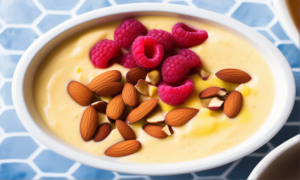 Low-Calorie Mango-Almond Smoothie Bowl
Low-Calorie Mango-Almond Smoothie Bowl
 Low-Calorie Huevos Rancheros Tacos
Low-Calorie Huevos Rancheros Tacos
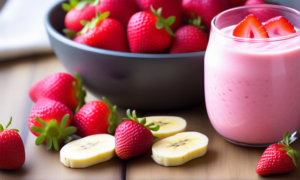 Low-Calorie Strawberry-Banana Protein Smoothie
Show All
Low-Calorie Strawberry-Banana Protein Smoothie
Show All
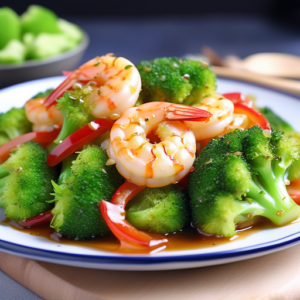 Lemon-Garlic Shrimp with Sautéed Broccoli
Lemon-Garlic Shrimp with Sautéed Broccoli
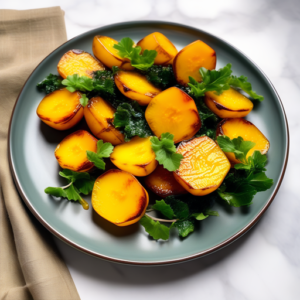 Honey-Glazed Roasted Golden Beets with Thyme
Honey-Glazed Roasted Golden Beets with Thyme
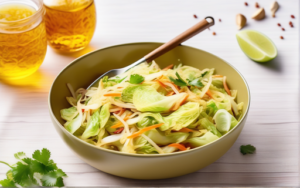 Sesame-Ginger Cabbage Stir-Fry
Show All
Sesame-Ginger Cabbage Stir-Fry
Show All

 Follow
Follow



